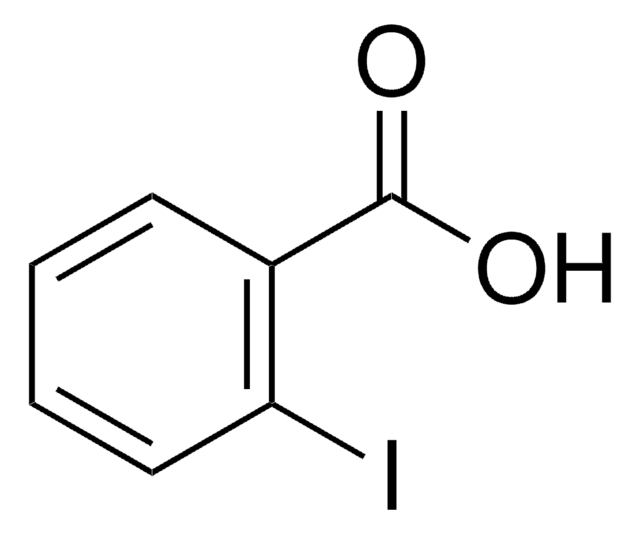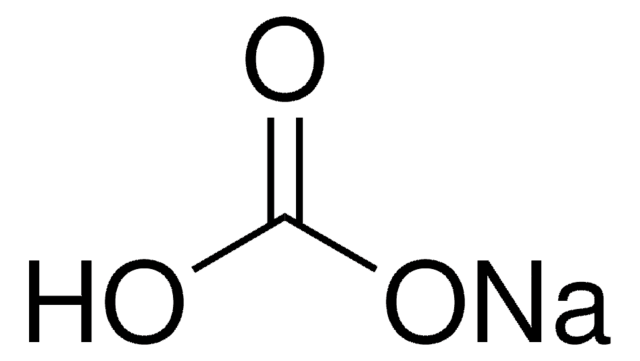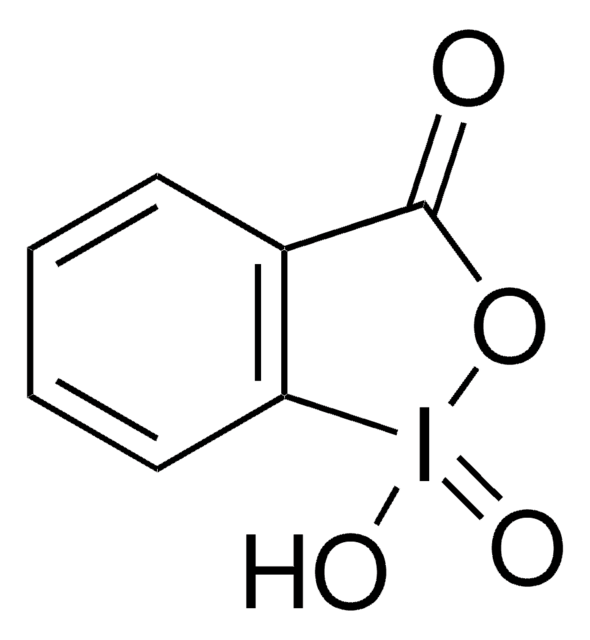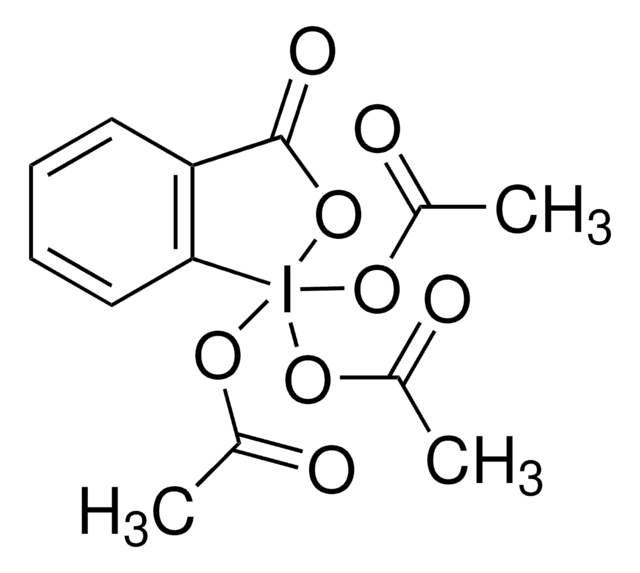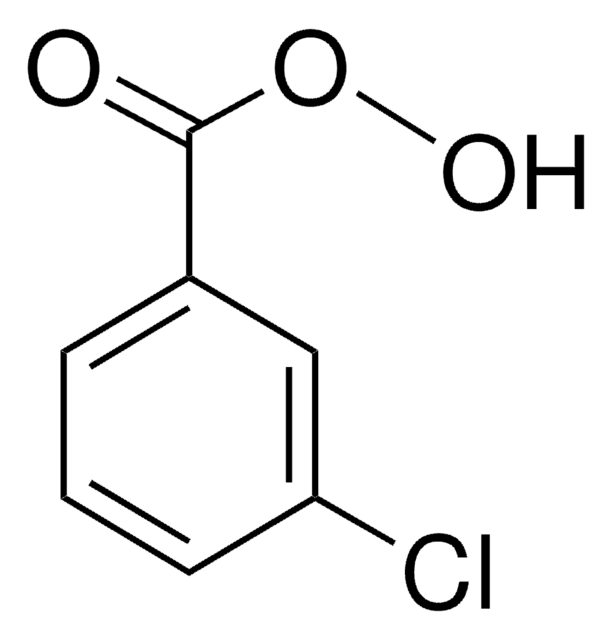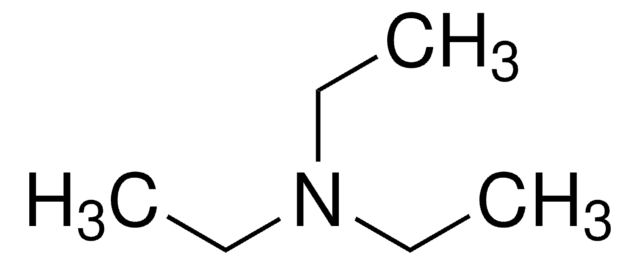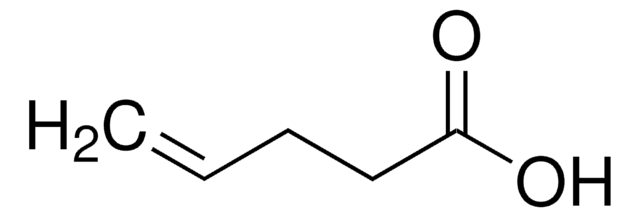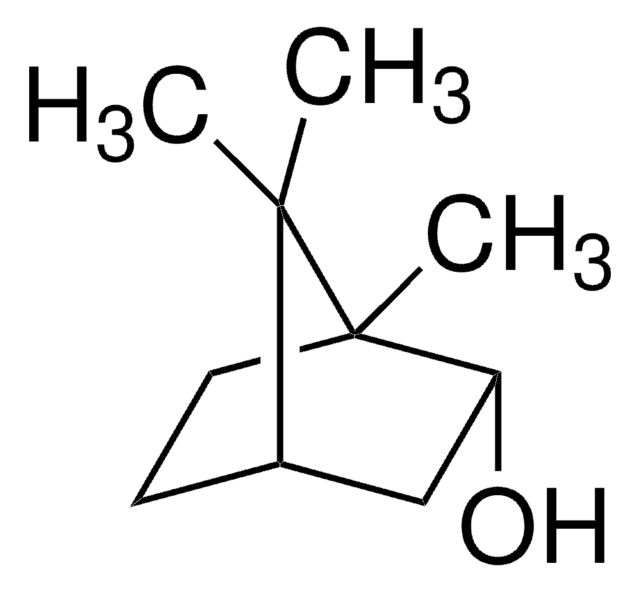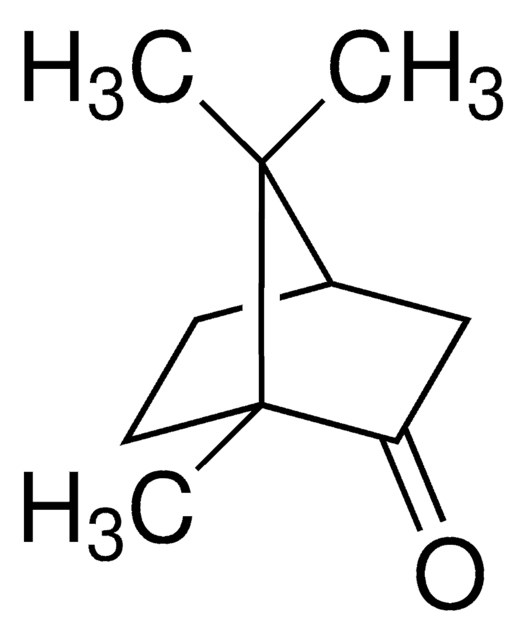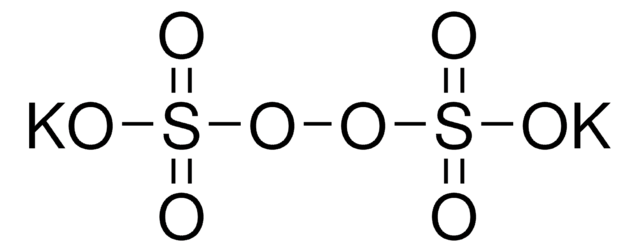228036
OXONE®, Monopersulfatverbindung
Synonym(e):
Kaliumperoxymonosulfat
About This Item
Empfohlene Produkte
Dampfdruck
<0.0000017 hPa
Qualitätsniveau
Form
powder
Eignung der Reaktion
reagent type: oxidant
Konzentration
>4.0% (active oxygen basis (by Na2S2O3, titration))
pH-Wert
2.1 (77 °C, 30 g/L)
SMILES String
[K+].[K+].[K+].[K+].[K+].OS([O-])(=O)=O.[O-]S([O-])(=O)=O.O[S+]([O-])([O-])(=O)=O.O[S+]([O-])([O-])(=O)=O
InChI
1S/5K.2H2O5S.2H2O4S/c;;;;;2*1-5-6(2,3)4;2*1-5(2,3)4/h;;;;;2*1H,(H,2,3,4);2*(H2,1,2,3,4)/q5*+1;;;;/p-5
InChIKey
HJKYXKSLRZKNSI-UHFFFAOYSA-I
Suchen Sie nach ähnlichen Produkten? Aufrufen Leitfaden zum Produktvergleich
Verwandte Kategorien
Allgemeine Beschreibung
Anwendung
2-Iodbenzolsulfonsäure fungiert als extrem aktiver Katalysator für die selektive Oxidation von Alkoholen zu Aldehyden, Ketonen, Carboxylsäuren und Enonen mit Oxon
Praktische Halogenierung von α,β-ungesättigten Carbonylverbindungen mit OXONE® und Halogenwasserstoffsäuren (HBr, HCl).
Rechtliche Hinweise
Signalwort
Danger
H-Sätze
Gefahreneinstufungen
Acute Tox. 4 Oral - Aquatic Chronic 2 - Eye Dam. 1 - Skin Corr. 1B
WGK
WGK 3
Persönliche Schutzausrüstung
Eyeshields, Faceshields, Gloves, type P3 (EN 143) respirator cartridges
Choose from one of the most recent versions:
Analysenzertifikate (COA)
Sorry, we don't have COAs for this product available online at this time.
If you need assistance, please contact Kundensupport
Besitzen Sie dieses Produkt bereits?
In der Dokumentenbibliothek finden Sie die Dokumentation zu den Produkten, die Sie kürzlich erworben haben.
Kunden haben sich ebenfalls angesehen
Artikel
Oxidation and reduction reactions are some of the most common transformations encountered in organic synthesis
Unser Team von Wissenschaftlern verfügt über Erfahrung in allen Forschungsbereichen einschließlich Life Science, Materialwissenschaften, chemischer Synthese, Chromatographie, Analytik und vielen mehr..
Setzen Sie sich mit dem technischen Dienst in Verbindung.

